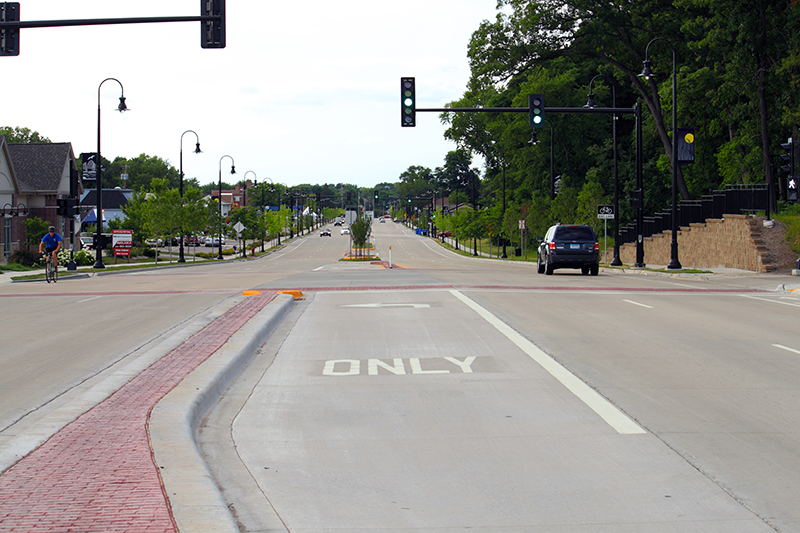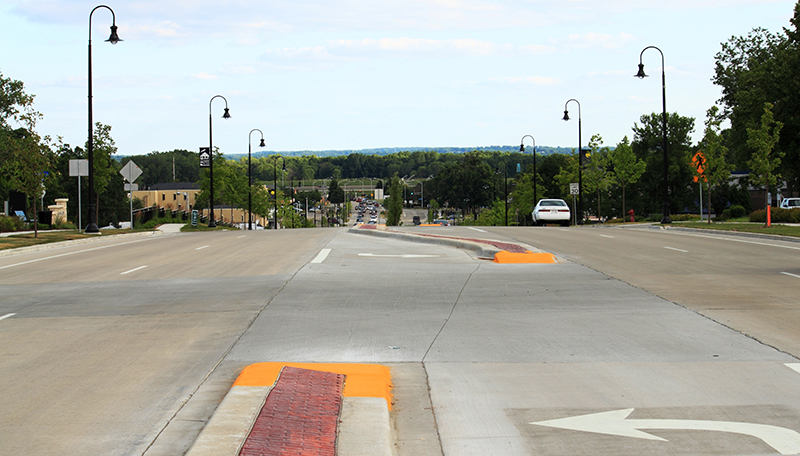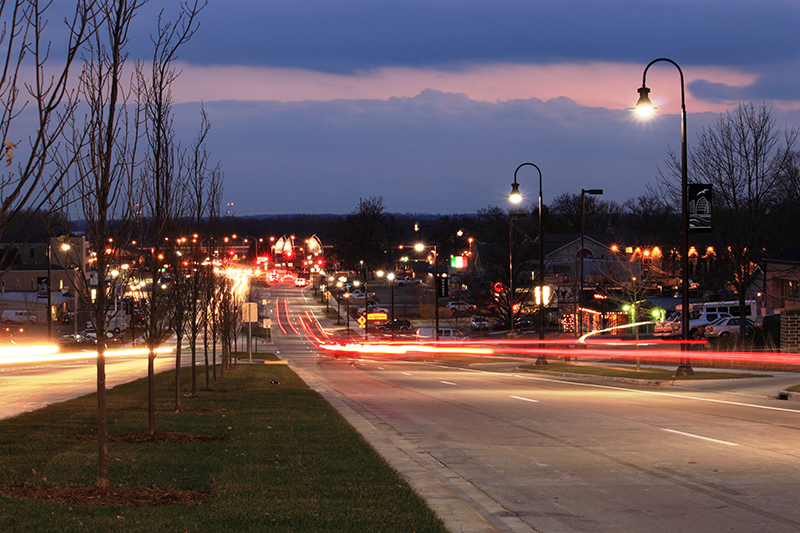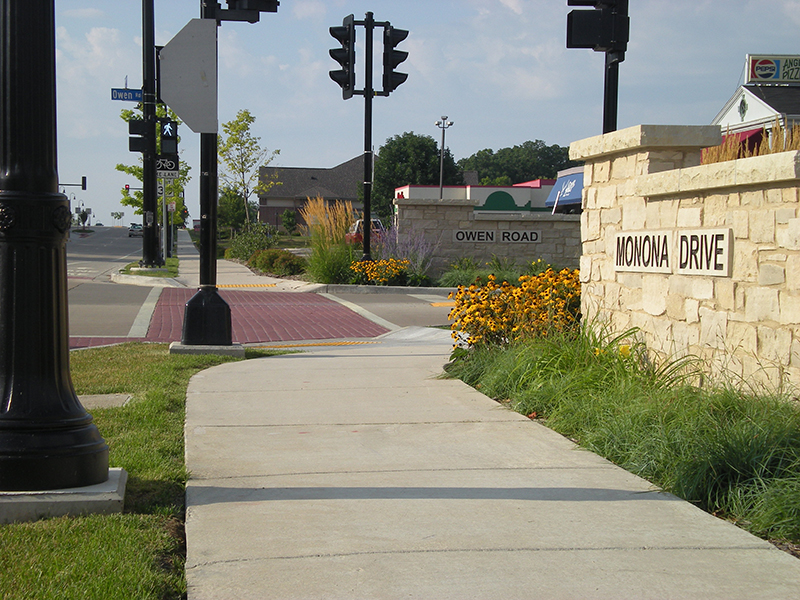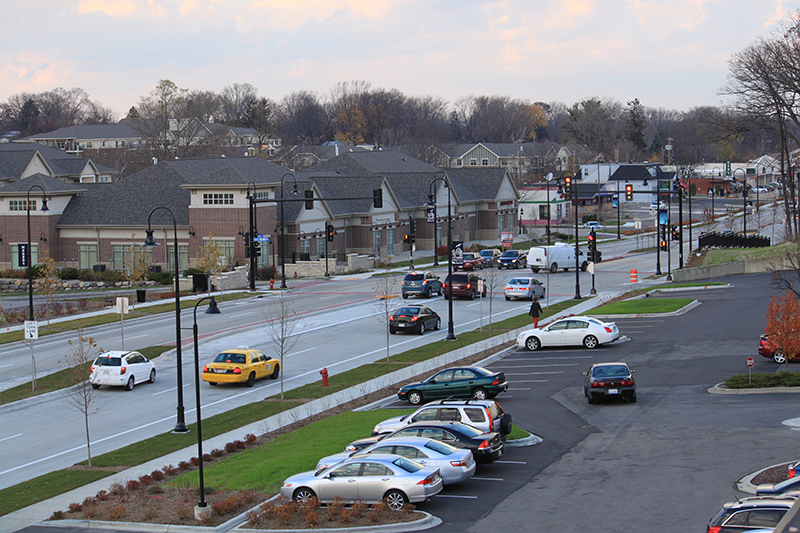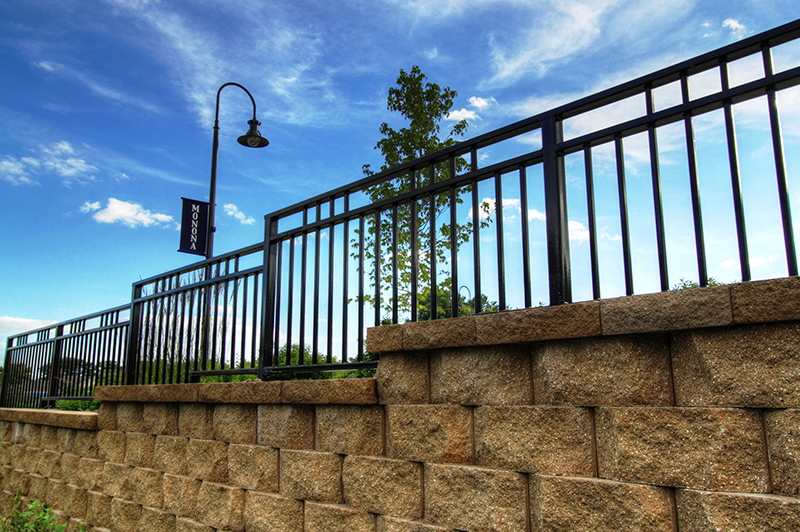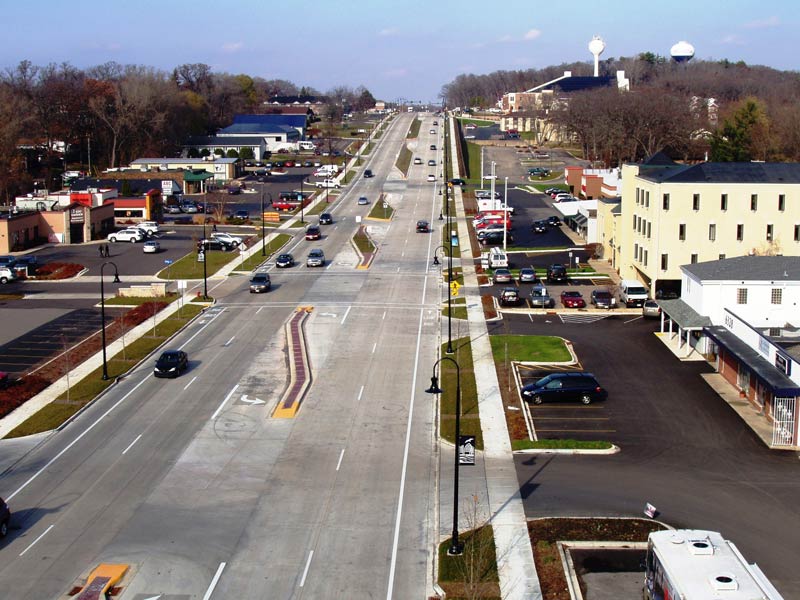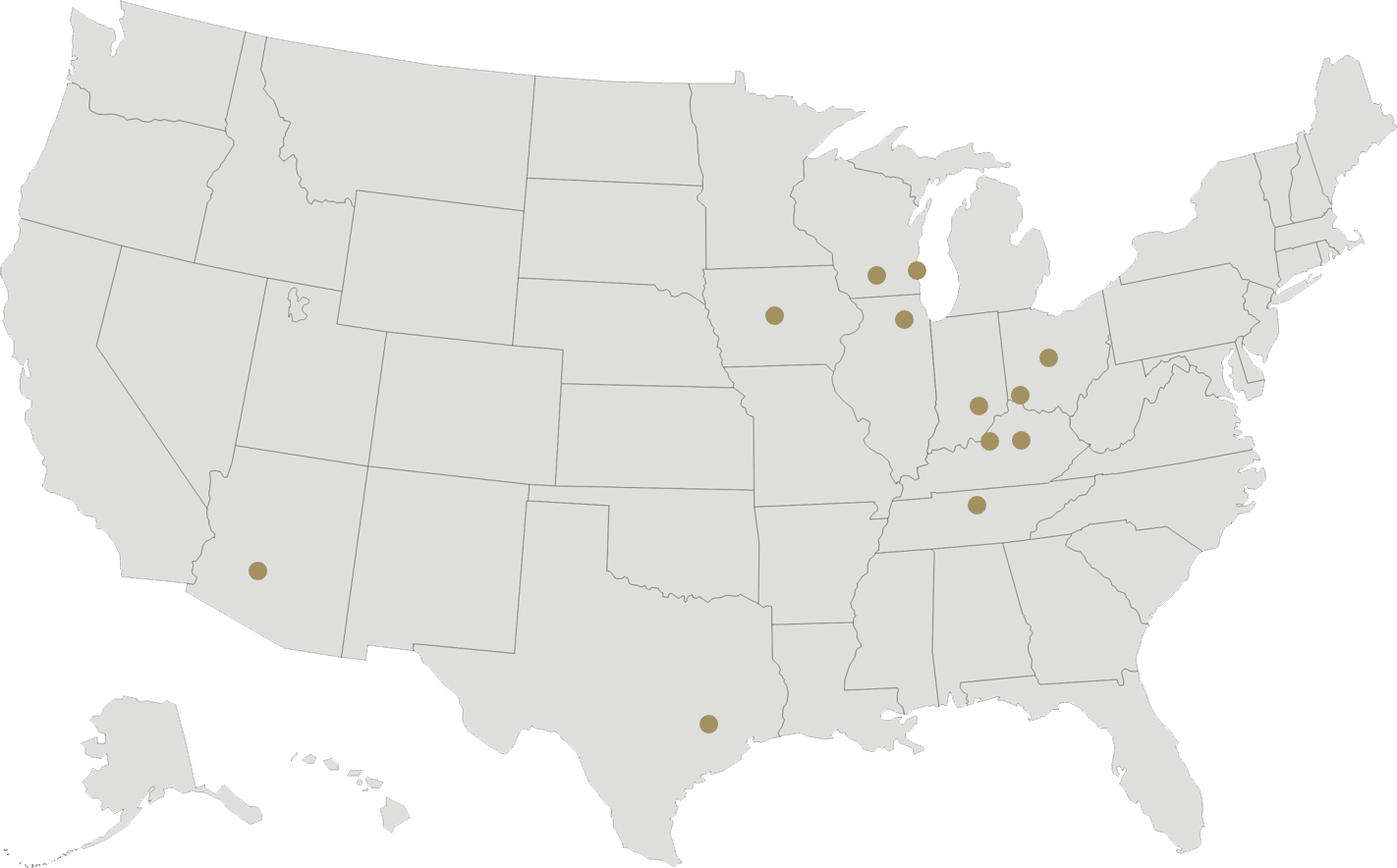The Monona Drive Street Reconstruction Project could have been a standard street re-build, but our team enhanced the project by incorporating a variety of sustainable components throughout the corridor. This project consisted of three phases of 2.5 miles of roadway widening and reconstruction. We provided design services for 2 miles of the project (phases I and III) as well as construction oversight for all phases. The sustainable elements that were incorporated into the final design included:
- Improved traffic flow, reducing congestion, idling, and stop/start resulting in reduced emissions and fossil fuel consumption from the 25,000 vehicles per day traveling the corridor.
- 41,000 tons of the existing concrete pavement removed, crushed, recycled, and reused, keeping it out of landfills. In addition, all removed asphaltic pavement was recycled and more than 90 percent of the temporary asphalt used during traffic staging was recycled.
- Bicycle lanes and continuous sidewalks provided on both sides of the roadway encouraging alternative transportation.
- LED traffic signals and LED street lighting for energy savings.
- 700 square feet of bioinfiltration throughout the project to manage stormwater runoff and provide water quality improvements.
- Sustainable stormwater management techniques, including depressed roadway terraces to slow the runoff, and inclusion of sediment sumps in all inlets.
- Increased landscaped areas, and more than 500 new trees along the corridor, which is approximately a 2:1 ratio, tree replaced to trees removed.
